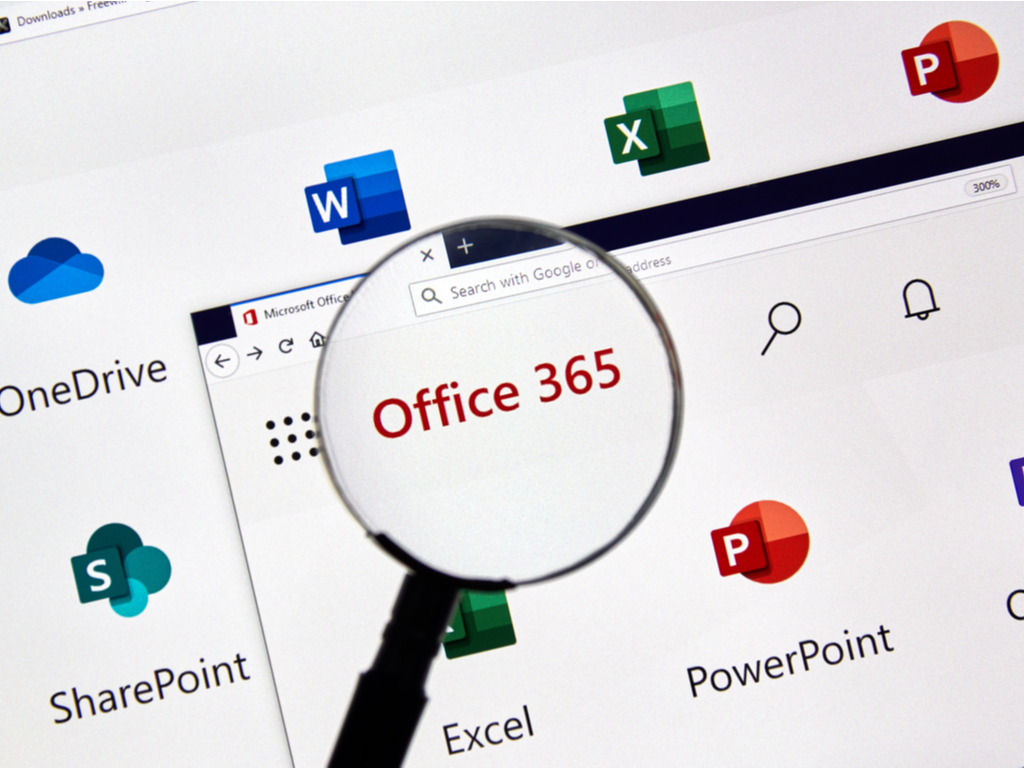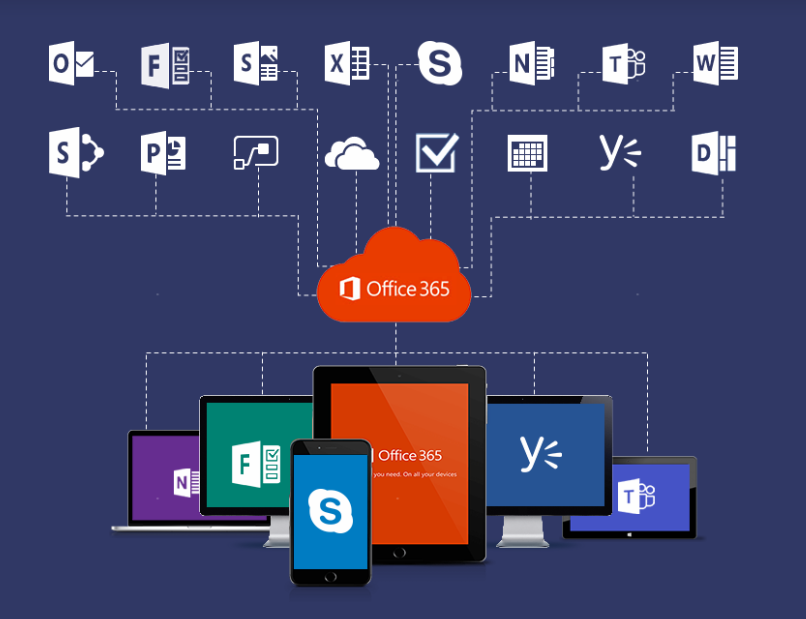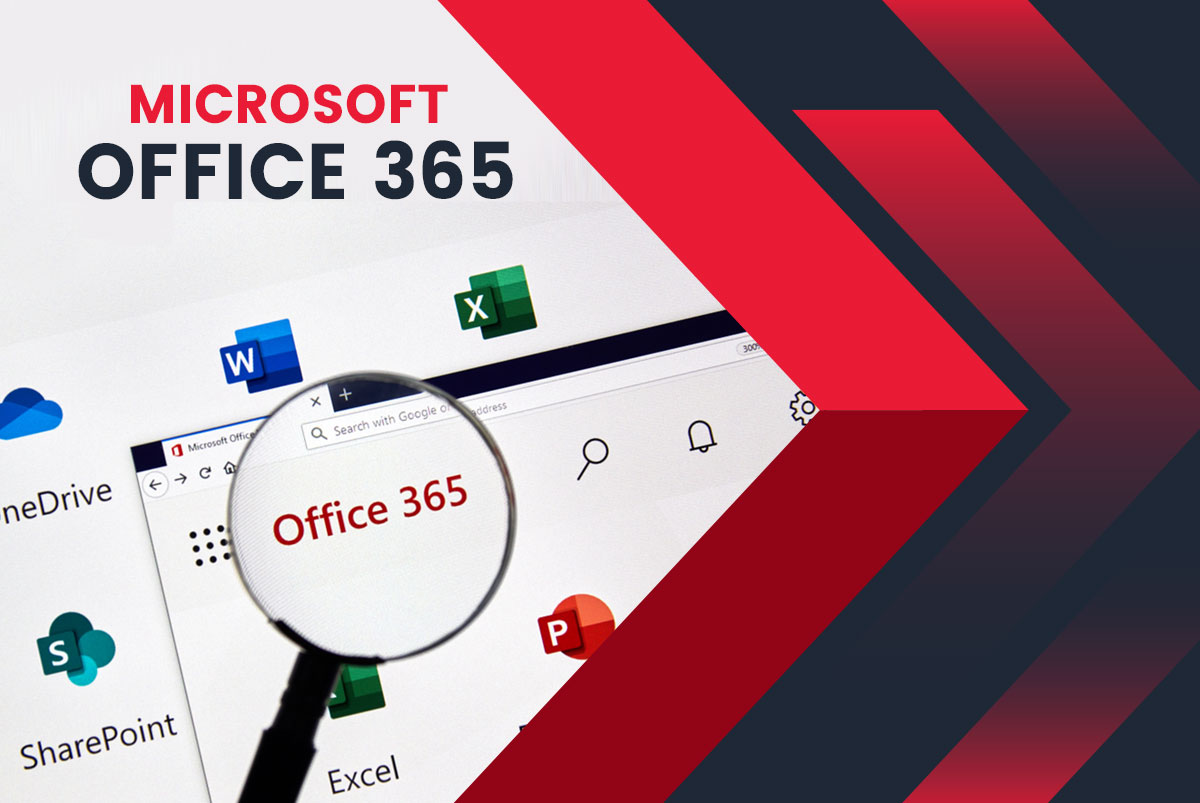Office 365 is best known in the market as the business tool that allows organizations to communicate, create, and share information seamlessly using the cloud. It provides an impressive range of enterprise-level functionalities and features to help your business maximize its productivity all in one place, from the cloud. While some companies have already successfully made the transition to the cloud, others are still waiting on the side lines. Most of these companies simply cannot wrap their minds around the complexities of the migration itself, which can be daunting for sure. However, what they need to focus on before taking the leap is the critical benefits Office 365 migration can offer. This blog will aim to explore 5 significant benefits that outsourcing Office 365 migration services can bring your organization.
To gain a better idea of how exactly outsourcing Office 365 migration can benefit your business, we will first need to understand what the migration process involves. To go about this, let’s start by exploring the 4 major Office 365 Migration types that could be leveraged.
4 Different Office 365 Migration Types

Before you decide to take up Office 365 migration for your enterprise, be sure to choose a migration type that best fits your needs and business operations. Here are 4 types of Office 365 migration services that you can opt for, depending on your business requirements:
Staged Migration
With Office 365 staged migration, everything is moved over in batches. This type of migration is useful to transition all your existing users and mailboxes from Exchange 2003 or 2007 to Exchange Online. Staged migration is a good option for businesses that find value in moving users to the Office 365 environment in batches over a specific period of time. This method is especially useful for medium-sized companies with over 2,000 mailboxes that are currently employing on-premises Microsoft Exchange 2007 or 2003. It is not an available migration option for companies using Exchange 2013 or 2010, however.
A staged Exchange migration to Office 365 transfers all your mailboxes in batches over a pre-determined period of time. It requires that you use the Directory Synchronization tool to replicate your accounts from the Active Directory on-premises database. If everything goes according to plan, all your mailboxes will be hosted in Office 365 by the end of the migration process.
During this migration process, all Office 365 users will be able to receive and send emails to any users in the organization. This means that users that have not even been migrated over to Office 365 yet will still be able to use their email functions normally. The only resources that users will not be able to access while you migrate email to Office 365 would be the calendars and your assigned mailbox delegates. This is because they both require additional layers of synchronization.
Staged migration should be used only in cases where the old environment will not be needed once migration is completed. That means that there is no rollback feature available for organizations that change their mind about their Office 365 migration.
Cutover Migration
This Office 365 migration process allows you to move all your data from Exchange 2013, 2010, 2007, and 2003 to Office 365 in one go. This cutover method enables easy transitioning from an on-premises Exchange system to the Office 365 environment. All your resources are moved at once. This means that all contacts, distribution groups, and mailboxes are only available in the new location. It is important to note that with cutover migration you cannot select specific accounts or objects to migrate. Once the move is completed, every user will have an Office 365 account and nothing more.
Microsoft Office 365 support services are not needed during cutover migration because it is a fairly simple process. It is a simple process because it works with a limited size of mailboxes to transfer over. In fact, it is recommended that you use cutover migration if you have less than 2,000 mailboxes to migrate over. Microsoft even recommends this method for enterprises with less than 150 users as the migration method is fairly straightforward then. The only drawback then would be that every user’s Outlook profile will require Office 365 reconfiguration in order to connect to the Office 365 environment post-migration.
This migration process is not ideal for organizations with more than 2,000 users. This is because the Office 365 setup and migration that is required cannot exceed a certain amount of time. A cutover migration that requires migrating over 2,000 users will just not complete in a fixed amount of time. To make sure that none of your valuable data is lost in the process, you will need to limit this type of migration to accounts with 2,000 users or less.
Hybrid Migration
Hybrid migration is ideal for organizations that want to migrate to Office 365 in the cloud as well as keep some on-premises servers running as well. This type of migration allows for Office 365 integration with the on-premises Exchange servers and any existing directory services. Because of this integration, you are able to manage and synchronize user accounts in both environments.
Unlike the cutover method, you can select specific mailboxes to migrate over. This means that you are able to move different mailboxes in and out of the Exchange Online environment with hybrid migration. This is important because you can decide which mailboxes to keep on-premises and which mailboxes to migrate over to Office 365, as per your unique business requirements. You can even introduce single sign-ons and synchronize passwords for your team to make it easier for them to log in to both environments when needed.
Hybrid migration is best for larger companies that have more than 2,000 mailboxes at their disposal. It requires that you have Exchange 2010 or later. In case you don’t, you will be required to install an on-premises Exchange 2010 or later SP3 server. This is so that hybrid deployment connectivity is enabled between your different environments so that they may work together. Office 365 email encryption setup may also be required to ensure that all your data is safe while travelling back and forth between the 2 server environments.
IMAP Migration
IMAP (Internet Message Access Protocol) migration allows businesses to transition users from Gmail or any other email systems that support it. Unlike the first 3 Office 365 migration types, IMAP migration does not rely solely on Exchange. An IMAP migration is unique in that it extracts information from your source mailboxes and then deposits it into the Office 365 environment.
However, IMAP migration does not migrate anything other than emails. Any contacts, calendar items, or tasks that you currently have on your system will stay in its original inbox. These will have to be migrated manually by the user in their own time. Also, this type of migration is a little less straightforward as it requires you to create a mailbox for every user before initiating IMAP migration. This means that unlike the other migration types, you will have to be more in control of the migration process. You may also need to be more alert throughout the migration process because it is not streamlined and automated like the others.
A limit of 5,000,000 items and 50,000 total mailboxes applies when it comes to IMAP migration. Also keep in mind that once the IMAP migration process is completed, any new emails being sent to the original mailbox will not be migrated over.
Benefits of Outsourcing Office 365 Migration Services

Cost Cutting
The biggest benefit of outsourcing Office 365 migration services to the experts is that you will save costs. This is because outsourced services are most often provided from the shores of 3rd world nations. These nations often have the manpower, technologies, infrastructure, skills, and expertise needed to address your requirements, but at literally half the cost. Office 365 migration can be very complicated and requires experts on staff to ensure that no glitches, errors, or downtime results from it.
By not resorting to hiring more in-house IT staff to ensure that the Office 365 setup and migration process is properly handled by professionals, you also save on costs. Moreover, you can also save money by not having to invest in costly IT infrastructure to ensure that the Office 365 migration process is successful the first time around.
Project Expertise
Your current IT department may not have complete expertise when it comes to conducting a successful Office 365 migration for your business. They may just be equipped to handle everyday tasks and challenges specific to your business like keeping your networks secure and your software updated. How much expertise do they actually have in Office 365 migration specifically? Most often, the answer is almost none. Rather than end up with shocking results and an email server system that does not work properly, outsourcing your Office 365 migration requirements can be a solid solution.
The experts that you bring on when you outsource Office 365 migration have many years of expertise and know the migration process inside and out. They also know how to address the usual challenges that surface during the migration process. This is something that would be novel to your in-house IT experts – which raises the chances of it going terribly wrong.
Data Security
If your email server decided to go offline in the middle of the Office 365 migration process, hell would break loose if your current IT department were left in charge. This is because they lack the knowledge and expertise required to ensure that no complications arise during the migration process in the first place. Outsourcing your Office 365 migration requirements would help you guarantee data security during the entire process.
The experts would be available 24/7 to ensure than any potential threats to your systems and networks would be flagged and handled before they could ever become an issue. With the right support in place, you no longer need to fear for disruptions in business continuity, which is a huge weight off your mind. When you outsource your Office 365 migration services to the professionals, you are choosing a level of support that completely eliminates these security threats and risks.
Focus on Core Business
Some Office 365 migrations can take up to 2 months to complete, especially when attempting to migrate as many as 50,000 mailboxes at one time. Because it can be quite a challenging process, you will want to ensure that as many skilled resources are working on it as possible. This means that your other business operations and IT functions will be given less of a priority. What that results in is a drain on your resources and a loss of productivity. Ideally, this is not a place that your business should find yourself in as you are diverting valuable resources from their original function.
Whether that be working to ensure data security or synchronizing passwords for single sign-on, your business needs your IT experts to focus on their core responsibilities. When your outsourced resources conduct Exchange migration to Office 365, this allows your IT staff to focus on their core business functions. In this way, you can ensure that no inefficiencies or loss of productivity arises when you need to migrate your email Exchange servers to Office 365.
Smooth Transition
Outsourcing your Office 365 migration services can also help you benefit from a smooth transition. Most organizations have skills gaps when it comes to being able to adopt newer technologies, such as moving to the cloud. IT staff often need to be extensively trained both during and after the migration process is over to ensure that the new investment pays off. By providing Microsoft Office 365 support for your entire organization during migration, your business is essentially ensuring the success of your new cloud-based networks and systems. Outsourced IT personnel can help you mitigate poor cloud technology adoption by dedicating time and resources to covering the existing training and skills gap. This will help your organization adopt the Office 365 technology much sooner and with greater ease, so that business productivity can explode as soon as the migration process is complete.
Office 365 migration can either be tricky or seamless. It basically depends on whether you want the experts to work on it or you want to leave it to your existing IT department to figure out. Outsourcing your Office 365 migration services can be a great alternative to going at it alone. Not only can you benefit from a smoother transition, but you can also get more focused on your core business.
This is because by outsourcing you do not waste valuable in-house resources on a temporary migration process. You can also benefit from greater data security and project expertise during the Office 365 migration process when you outsource your requirements to professionals in that niche. Best of all, you can look forward to greater cost savings and improved productivity when you choose to outsource Office 365 migration sources to the experts.
Migration Experience
Third-party experts have the required experience to perform Office 365 migration seamlessly. Their exposure to different types of migration requirements across industry domains have honed their skills to meet any kind of challenge. They leverage this exposure to meet Office 365 migration requirements for varied clients.
Seamless Data Transfer
Every migration process involves complete data transfer from the source to the intended destination. Outsourcing Office 365 migration to experts enables smoother data migration, including transferring relevant settings, data formats, and other custom transfers. Hiring professionals who are excellent in data migration could help you complete a successful migration process.
Nailing Pre-migration Activities
Professional consultants carry out a comprehensive deployment analysis of Office 365 before the migration process. This helps them draw a detailed plan to fix issues before the process starts. They tailor an effective solution keeping in mind the need to remove unnecessary components that could hamper the migration process .
Post Migration Support
While there are several benefits of migrating to Office 365, being assured of post-migration support is critical. This gives enterprises the peace of mind to focus on their key activities. A third-party vendor always keeps their staff ready to address issues no sooner than they arise. This is particularly true for vendors who have a global presence
Who We Are and Why Our Expertise Matters?
This article is brought to you by FlatworldEDGE, an IT infrastructure solutions provider specializing in mobile app development, infrastructure management, custom software development, and software testing services. With over 10 years of experience in the field, we understand how to optimize the use of these technologies to help our clients seize new business opportunities and drive sustainable business performance. We specialize in Office 365 migration services as we have developed proficiency in executing such migrations in a very short period of time owing to extensive planning. Our clients trust us to deliver solutions that will move their business forward in the midst of stiff competition.






